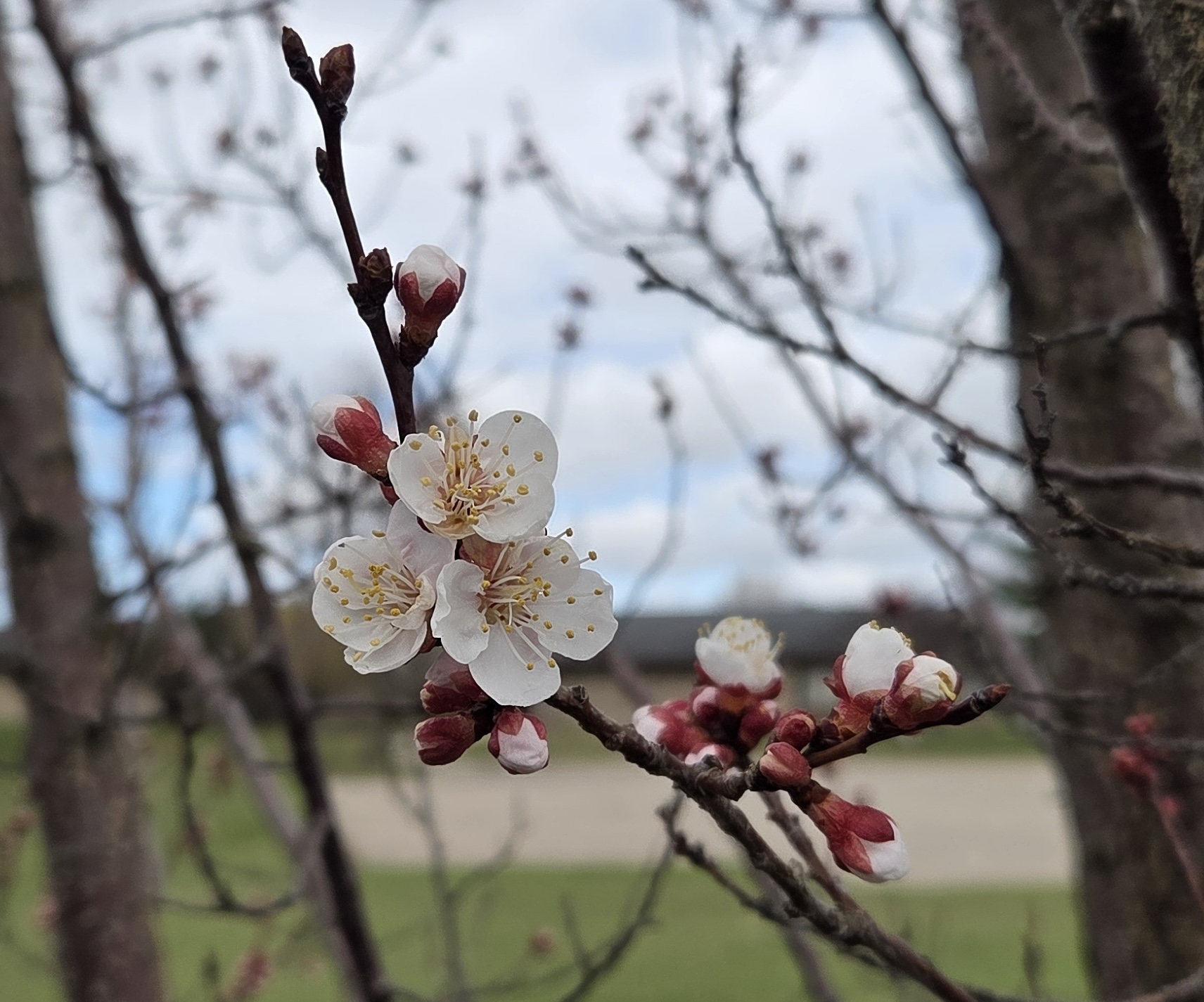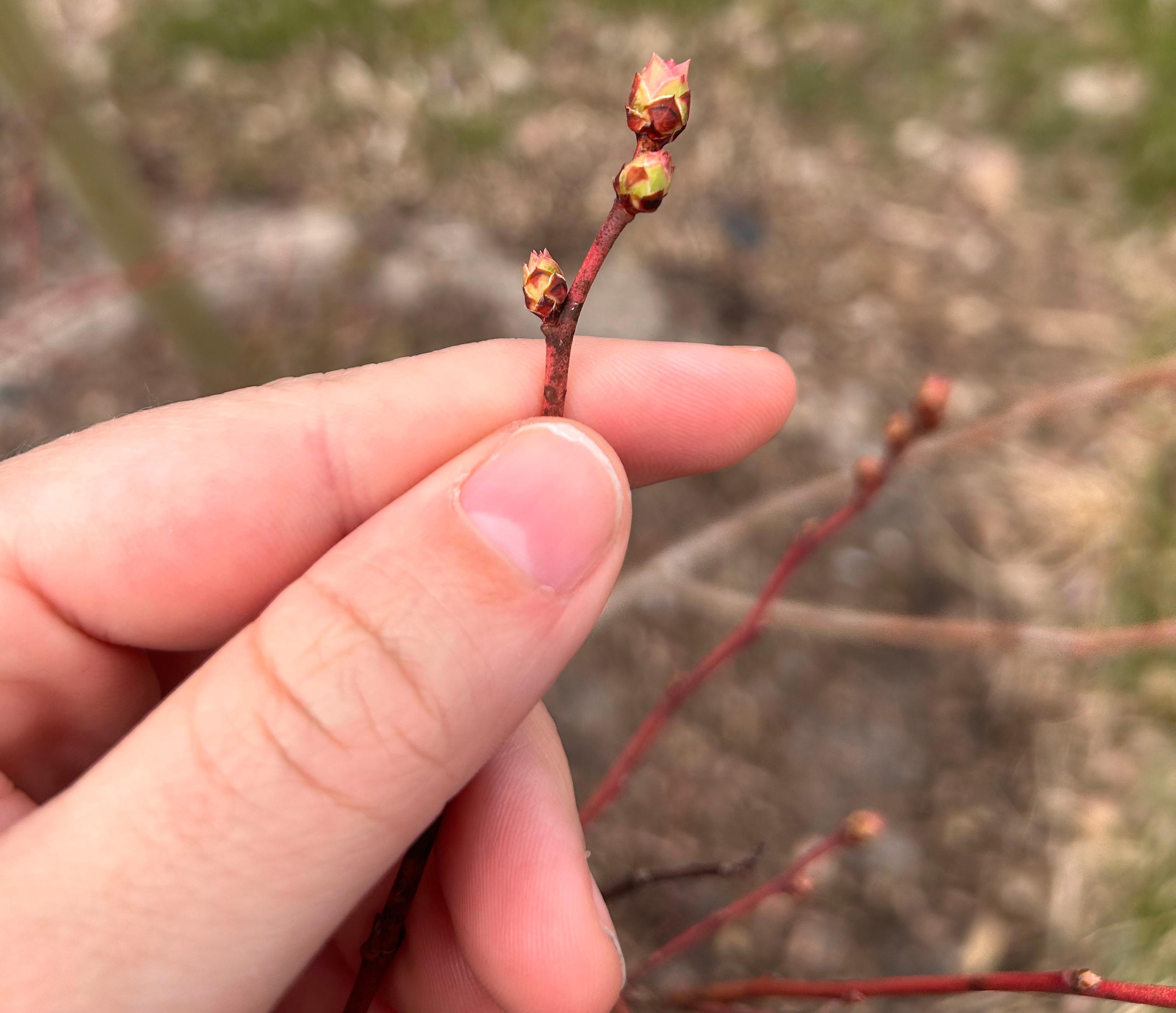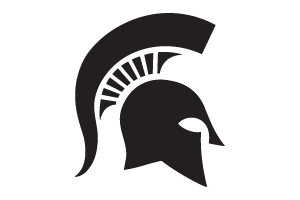Southwest Michigan fruit update – April 8, 2025
It’s cold and wet but the fruit are waking up!

MSU fruit updates
Michigan State University Extension is in the process of filling the tree fruit specialist position based at the Southwest Michigan Research and Extension Center. Because of this, there will be a more abbreviated tree fruit section in our weekly updates until the position is filled. We are also moving our weekly integrated pest management (IPM) updates to a virtual format and dividing them into tree fruit-specific meetings and small fruit-specific meetings. The small fruit weekly updates are held Tuesday evenings. Tree fruit weekly updates begin Wednesday, April 16. We are hoping to return to joint small and tree fruit updates next year. Thank you for your understanding and happy spring!
Weather
Last week was cool. Southwest Michigan saw high temperatures in the low 60s on Wednesday and Thursday last week, but the remainder of the week was in the low 50s and upper 40s. Lows were in the mid-30s, dropping into the mid- to upper 20s for the start of this week. All-day rains on Wednesday, April 2, brought over 2 inches of rain to the region. The rains over the last 10 days have added some much-needed moisture to the soils, but the U.S. Drought Monitor is still indicating drier than average soils coming into spring.
The forecast for the upcoming week is for temperatures to gradually increase through the week from lows in the 20s and highs in the 30s on Tuesday up to lows near 50 and highs near 70 by the start of next week. A precipitation system will pass through the area on Wednesday afternoon, April 9, into early Thursday to usher in the warmup. Expect localized dustings of snow on grassy areas and up to a half-inch of rain. The rest of the next week is expected to be dry.
Tree fruit
Green fruitworm have been captured in monitoring traps in southwest Michigan over the last week. Egglaying should begin next week. The larvae of this early season moth can cause low levels of damage to developing leaves during and shortly after bloom and developing fruit as larvae mature.
Apricots are between first and full bloom in Berrien County, depending on variety and location. Some small levels of freeze damage has been observed in some locations as a result of last Monday’s cold event. Early indications are somewhere between 10-20% damage.

Peach and nectarine buds are swollen. Early varieties are between Calyx green and first pink. The mild temperatures lately have made the trees prone to peach leaf curl infections. Infections require 10-plus hours of wetting with temperatures in the range of 46 to 55 degrees Fahrenheit. Treatment now can help suppress additional infections when these weather conditions occur even past bud swell. Low levels of copper also suppress bacterial spot populations.
Tart cherries are at side green to early green tip in central Berrien County. Copper sprays can be safely applied to cherries. Copper applications may reduce bacterial canker in cherries.
The early apple variety Zestar is at tight cluster in Berrien County. Many varieties are between silver tip and green tip. Scab sprays will be needed to protect against future rains as green tissue emerges. Protectants are preferred over systemic fungicides at this time of year for scab control.
Pear buds are at early tight cluster. Pear psylla adults are flying. Scab sprays are needed as green tissue emerges.
Small fruit
Grapes show little movement. Bud swell has begun in juice grapes and many wine grape varieties.
Blueberries are at bud swell up through southern Allegan County with some earlier varieties flirting with early green tip. Growers still have time to apply copper, Sulforix or lime sulfur products to suppress early season diseases, but that window will close quickly.

Strawberry overwintering mulches should be removed and raked between the rows. Some growers are putting out floating row covers. Growers are looking at early season herbicides to control overwintering weeds. When selecting an herbicide, check the preharvest interval.
Many bramble growers are dormant pruning. Leaves are beginning to emerge in some varieties. In summer bearing raspberries, last year’s primocanes should be headed (cut back) to the desired height and any remaining floricanes from last year should be removed. Fall bearing raspberries should be cut or mowed to the ground. Lime sulfur treatments for anthracnose can still be applied where foliage hasn’t emerged.
Upcoming meetings
This year, in lieu of our historical Monday Night Fruit IPM Meetings, we will instead be hosting Tuesday night small fruit IPM meetings. They will take place entirely online and start at 5:30 p.m. on April 1 and will occur weekly until June 24. Sign up here for the small fruit meetings. There will also be tree fruit IPM meetings taking place beginning April 16. Sign up here for the tree fruit meetings.
If you are interested in new spraying technologies, MSU Extension is hosting an in-person workshop on spray drones at the Saginaw Valley Research and Extension Center near Frankenmuth on April 29. This event will combine presentations around effective use of spray drones and live demonstrations of spray drone technology and evaluation tools. This event will be valuable to people interested in spray drones regardless of the crop they grow. Learn more about this all-day fly-in.



 Print
Print Email
Email


